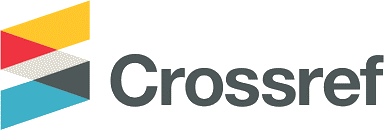Journal of Materials Exploration and Findings
Abstract
The human factors (HF) are recognized as one of critical process safety barriers involved in normal and abnormal conditions in the oil and gas industry. In order to strengthen the HF roles as barriers we need to ensure that the actions generated are based on a valid risk assessment of the operation to be addressed by a relevant human factor analysis. Organizations within the oil and gas process have made much progress in understanding and implementing HF improvement programs. However, organizations are not always clear about what are their current situations in managing HF, their priorities for HF to be improved or where they should focus in their future plans. The objectives of this paper are to develop and propose a model called the human integrity management system (HIMS) model and the way its maturity level (HIMS-ML) is measured in managing HF related to asset integrity (AI) and process safety (PS) implementation. It nowadays becomes something urgent to be implemented but also, importantly, to identify where future efforts and strategy need to be set-up used as basis for improving HF. The proposed HIMS model introduces 5-level scale to determine the level of maturity and includes 20 key elements mainly generated from Bow-Ties model and mapping alignment with the CCPS-risk based inspection process safety (CCPS-RBPS) where 46 expectations are developed to reflect key HF issues within the process safety management system to prevent and mitigate the major accident hazard (MAH) event. This paper describes the model and the method of assessment, illustrating its use with a case study in the 3 big oil and gas operators in Indonesia. Spider chart is used to reflect the results of the maturity assessment obtained based on the response given by the relevant key persons in the organization. It can be concluded that the proposed model appears to be an effective and useful tool to measure the maturity of HF management implementation in AI and PS operation, identify the gaps and propose improvement plans.
References
American Institute of Chemical Engineers 2021, Process Safety in Upstream Oil and Gas, New York: John Wiley & Sons.
Bakar, H A, Siong, P H, Yan, C K, Kidam, K, Ali, M W, Hassim, M H & Kamarden, H 2017, ‘Analysis of main accident contributor according to process safety management elements failure’, Chemical Engineering Transactions, 56, pp.991-996.
Bridges, W & Tew, R 2010, ‘Human factors elements missing from process safety management (PSM)’, In 6th global congress on process safety and 44th annual loss prevention symposium, pp.22-24.
Center for Chemical Process Safety 2018, Bow Ties in Risk Management: A Concept Book for Process Safety, Hoboken USA: Wiley.
Center for Chemical Process Safety 2011, Guidelines for Risk Based Process Safety, New York: John Wiley & Sons.
Department of Mines, Industry Regulation and Safety 2021, Human factors self-assessment guide and tool for safety management systems at petroleum and major hazard facility operations, Western Australia: Department of Mines, Industry Regulation and Safety.
Hartoyo, F, Fatriansyah, J F, Mas' ud, I A, Digita, F R, Ovelia, H & Asral, D R 2022, ‘The optimization of failure risk estimation on the uniform corrosion rate with a non-linear function’, Journal of Materials Exploration and Findings (JMEF), 1(1), pp.1-9.
Hartoyo, F, Irianti, G P, Fatriansyah, J F, Ovelia, H, Mas' ud, I A, Digita, F R, Fauzi, A & Anis, M 2023, ‘Weibull distribution optimization for piping risk calculation due to uniform corrosion using Monte Carlo method’, Materials Today: Proceedings, 80, pp.1650-1655.
International Association of Oil and Gas Producers 2016, Standardization of barrier definitions: Supplement to Report 415, London: IOGP.
Kooi, E S, Manuel, H J, Mud, M & Bellamy, L J 2020, Fifteen years of incident analysis: Causes, consequences, and other characteristics of incidents with hazardous substances at major hazard companies in the period 2004-2018, Bilthoven: National Institute for Public Health and the Environment, RIVM.
Maniar, M S, Kumar, A & Mentzer, R A 2020, ‘Global process safety incidents in the pharmaceutical industry’, Journal of Loss Prevention in the Process Industries, 68, p.104279.
Nwankwo, C D, Arewa, A O, Theophilus, S C & Esenowo, V N 2022, ‘Analysis of accidents caused by human factors in the oil and gas industry using the HFACS-OGI framework’, International journal of occupational safety and ergonomics, 28(3), pp.1642-1654.
Putri, E 2022, Penyusunan Kuesioner dalam Penelitian, Bandung: Pusat Mata Nasional RS Mata Cicendo, Fakultas Kedokteran, Universitas Padjadjaran.
Theophilus, S C, Nwankwo, C D, Acquah‐Andoh, E, Bassey, E & Umoren, U 2018, ‘Integrating human factors (HF) into a process safety management system (PSMS)’, Process safety progress, 37(1), pp.67-85.
Tiggor, T P & Riastuti, R 2022, ‘Risk Management of Carbon Steel Piping in Sweet Environment Multiphase Fluid Production’, Journal of Materials Exploration and Findings (JMEF), 1(2), pp.69-85.
Recommended Citation
Sihotang, Anggiat M.; Priadi, Dedi; and Asral, Datu Rizal
(2024)
"Study on Human Integrity Management System Maturity Level for Supporting Asset Integrity and Process Safety Implementation,"
Journal of Materials Exploration and Findings: Vol. 3:
Iss.
1, Article 1.
DOI: 10.7454/jmef.v3i1.1043
Available at:
https://scholarhub.ui.ac.id/jmef/vol3/iss1/1
Included in
Industrial Engineering Commons, Materials Science and Engineering Commons, Mechanical Engineering Commons, Risk Analysis Commons









